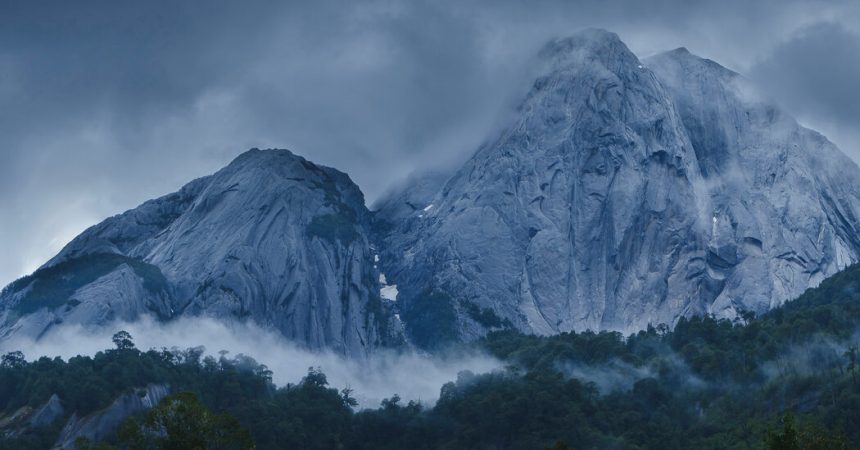As the helicopter lifted off and disappeared into the clouds, the roar of the whirring blades fell away and all that was left was the sound of the rain.
I just had been deposited deep inside Cochamó Valley, a remote cathedral of towering granite in central Chile that was at the center of a decade-long conservation battle.
I wanted to see this land for myself and hear firsthand from the people who had saved it. Now, I had to hike out.
My guide was a local activist named Rodrigo Condeza. An avid backcountry camper, Condeza started a nonprofit organization called Puelo Patagonia in 2013. His goal was to stop a proposed hydroelectric power plant in the area, a project that would have entailed the construction of roads, transmission lines and electric generation facilities.
On the other side of the fight was Roberto Hagemann, a wealthy Chilean industrialist who had spent years acquiring property rights from 200 local families to assemble a 325,000-acre (or roughly 500 square mile) property. Hagemann’s plan to develop the land would have disrupted a sensitive ecological corridor and, in the minds of environmentalists, spoiled one of the wildest places in South America.
In a separate article that we just published, I tell the unlikely story of how the two sides battled each other for a decade before ultimately reaching a surprising resolution: Hagemann has agreed to sell the land to Condeza’s group for $63 million.
It is a landmark transaction that will preserve an ecological corridor and connect a string of national parks in Chile and Argentina. It is also a case study of modern day conservation, spotlighting just how much legal, financial and political resources, and luck, are required to protect sensitive regions threatened by development.
‘The Yosemite of South America’
Condeza had promised a challenging hike, but it soon became clear that this would be a true slog. Getting a firsthand look at Cochamó would mean contending with relentless rain, rushing rivers and knee-deep mud. The nearest road, where our ride was waiting, was about nine miles away. We had gotten a late start, touching down after noon.
Within minutes of setting off from our landing site, we arrived on the banks of a frigid river. The only way across was through. Condeza walked straight in, instructing me to hold on to his backpack for support as we waded into water up to our thighs. My sneakers filled with water, my socks and pants were instantly soaked, and I braced myself against a swift current.
Minutes after emerging from the river, we plunged into mud. The trail was waterlogged and with each step we sunk into the ground, soupy dirt up to our ankles.
For much of the hike we were shrouded in dense trees, unable to see the valley around us (though not shaded enough to be spared from the rain).
Finally, after two hours, we emerged into a clearing.
On all sides, vast slabs of granite shot thousands of feet into the air, their peaks shrouded in the clouds. These are the walls that have attracted rock climbers around the world, who refer to Cochamó as the “Yosemite of South America,” a reference to the California climbing mecca.
We stood in awe, turning in circles to take it all in.
Then we kept walking. We had traveled just under two miles.
“We need to move faster,” Condeza said. At this rate, we would still be hiking when night fell, making the trails even more perilous.
‘Conserve it forever’
As we continued making our way out of the valley, Condeza told me more about his journey.
How he had led a local movement to block Hagemann’s plans for the power plant. How, after Hagemann’s property was listed for $150 million, he made a lowball offer of $50 million. How Condeza was connected with a pair of oversees charities that agreed to help fund the purchase. And how, after a decade of locking horns, the two sides reached an agreement that will protect the land in perpetuity.
For hours more, we fought our way out of the valley. We forged more rivers and passed enormous waterfalls. We crossed rickety cable bridges and wound through deep trenches carved by donkeys. All the while, the rain continued, soaking us through.
We picked up the pace, but not enough to beat nightfall. With headlamps on, we navigated the final treacherous stretch to the edge of the park. After more than seven hours, we reached the road. We were tired, soaking and cold, but also elated, buzzing with the thrill of having traversed some of the most pristine land in the world.
“Everyone who cares about Cochamó was really scared about who was going to buy it,” Mr. Condeza said. “But we all got together and stopped fighting and now we’ve made a solution to conserve it forever.”
A deal to limit coal, with some caveats
Countries from the Group of 7, which gathers some of the world’s richest democracies, have agreed to end use of unabated coal power by the mid 2030s. The agreement was announced days after the United States issued a new regulation that would force coal power plants to virtually eliminate carbon pollution by 2039 or shut down.
The G7 agreement opens the door for countries to use coal power if they can capture its pollution. That would give coal-dependent nations such as Japan some room to adapt.
When burned, coal generates more carbon dioxide than any other fuel source. In November, an agreement to phase out coal out failed to materialize at the global climate talks in Dubai, United Arab Emirates.
The new G7 commitment was welcomed as a big step forward by some climate advocates, while others said the end date was too late and that the agreement fell short by not expanding the ban to other fossil fuels like natural gas.
There’s also concern about the use of the word “unabated,” which could mean that coal plants can continue to operate as long as they capture at least some of their emissions. We wrote about the fierce debate around the meaning of unabated in an earlier edition of Climate Forward.
The new pledges come as global capacity to generate power from coal is on the rise, driven by a wave of new plants coming online in China and a slowing pace of retirements of older plants in the United States and Europe. That doesn’t necessarily mean countries are using more coal, as Our World In Data’s Hannah Ritchie recently pointed out.
David Waskow, who follows international negotiations for the World Resources Institute, said wealthy nations were sending a clear signal about coal use to nations around the world.
But the question, he added, is “whether and how countries will take what they agreed and actually put it into their next commitments” under the Paris Agreement, which would make them official policy. — Manuela Andreoni






